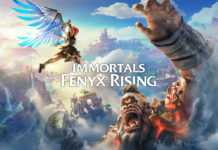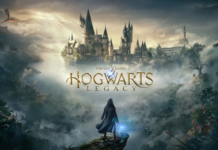Downloadable content is effectively
changing the gaming industry. Because developers can now upload their games
directly to an online store like Xbox Live Marketplace or PSN, small, obscure
games can bypass the bargain bins at Gamestop and actually get some attention.
Braid is one of the first games to make me yell “Thank God for downloadable
games!!”
If it wasn’t for XBL, this avante
garde, literary mind-trip of a game would never have been made.
At its core, Braid is a simple, 2-D
platformer. You play as Tim who is off in search of his Princess. To find her
you must find puzzle pieces located in each of the main worlds. After collecting
the pieces, you can put together portraits that not only reveal abstract images
of Tim’s life, but unlock the final level. But within five minutes of playing,
you’ll realize that Braid is far more complex than it looks. Understanding time
is essential to playing Braid. By hitting X, you can reverse time at will,
whenever you want. It takes some getting used to. Especially when you die and
realize, “Oh, I’ll just reverse time.” As you progress, however, new time
mechanics become introduced. In one world, time moves forward as you walk to the
right, and backwards as you move left – my brain still hurts from solving those
puzzles.

But Braid doesn’t just stop at
trying to be a smart puzzler. . . It’s also a love story! Oh yes, the main
character Tim had his heart broken by a Princess and he is off on a journey to
find her. The story is told through tiny vignettes in the overworld. Of course,
you can just skip them all-together if you want (but you don’t want that, do
you?) and only play the game. Oh, but you’ll miss out on so much! Word to the
wise: if you start Braid, finish it. The ending is absolutely remarkable and
unlike anything ever portrayed in a video game. The story actually pays homage
to old school games like Super Mario Bros and takes the endearing search for the
Princess and turns it into a poetic riff on the classic tale.
And that’s really the importance of
Braid – it’s unlike anything else. The visual style is not only breathtaking,
but artistic. The worlds are painted with Monet brushstrokes and constantly
“flow” with streams of light, snow, and leafs. And the characters themselves
have an eerie, realistic quality to them that is simultaneously intriguing and
repulsive. Throughout, there are great references to old school games, like
Mario Bros. and the original Jumpman in Donkey Kong.
In Braid, the unique twist on
gameplay is completely integrated into the story and themes. The ability to
reverse time whenever you want makes sense for the character Tim, who, as the
story tells us, used his control over time to cover up mistakes he made in a
relationship. As the game progresses, and the puzzles require different uses of
the time reversal mechanic, the story continues to validate the gameplay and
make it necessary. Something video games rarely do.

All of these clever references and
visuals, however, sit backseat to what is the most remarkable element of Braid.
That is, the experience. After beating Braid yesterday, the story and meaning
behind the game is only just now making sense. Not only is the game’s story a
deep meditation on love and relationships, but the experience is also the
feeling you will get while playing it. For me, that came from the incredible
music and abstract visual presentation. The sadness of the music becomes
reflected in the pastel worlds. But I will warn players that Braid can be very
difficult. The key to getting past a level when you’re frustrated is to just
take a break and let it sink in. But if you want the full meaning of Braid – and
trust me, the final level is a gaming masterpiece – you must finish the game;
whether that means looking up help on an internet FAQ or consulting NASA
scientists, you must finish it.
While I would like to have seen more
art assets used, and in particular, more worlds that showed off the wildly
creative ideas of developer Jonathan Blow, I think Braid is as close to a
masterpiece that games can achieve. While this might sound like extreme
hyperbole (or gamer’s puppy love), I would argue differently. But I also don’t
think Braid is going to be for everyone. The price tag of $15 might detract some
(though it’s well worth it) and the cerebral storyline might be seen as
pretentious. But for those who do choose to experience it, Braid is one game
you’ll never forget.
Review Scoring Details for Braid |
Gameplay: 9.5
While the simple 2-D platforming might seem outdated at first, you’ll quickly
realize that this game is not what it seems.
Graphics: 8.5
The visual style
is phenomenal – from the abstract portraits to the watercolor backgrounds. But
some art assets are repeated and the backgrounds don’t always look drastically
different from world to world.
Sound: 9.5
From soft strings to lively Celtic tunes, the music in Braid is beautiful yet
tinged with sadness.
Concept: 10
Braid is the first game I’ve played that taught me a little something about
relationships. Take that Gears of War.
Difficulty:
Medium/Hard
The difficulty can become very hard, but stick with it – it feels so good when
you finally figure out a puzzle.
Overall: 9.5
Because the game mechanics are
so thoughtfully integrated into the story, Braid’s meaning can only be
understood by playing it. And while it might be visually unassuming, Braid
offers players an experience (and a message about life) that few games have ever
dared to offer.









